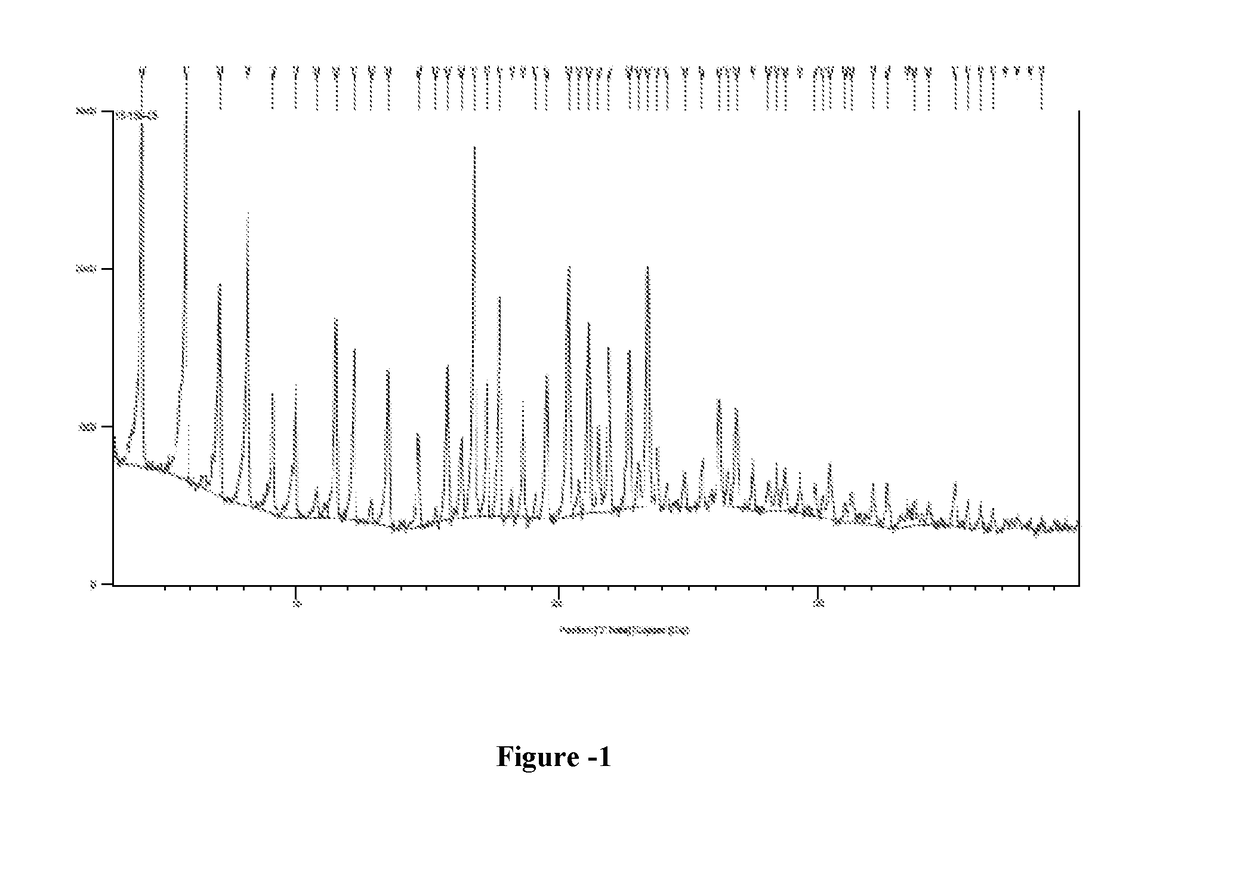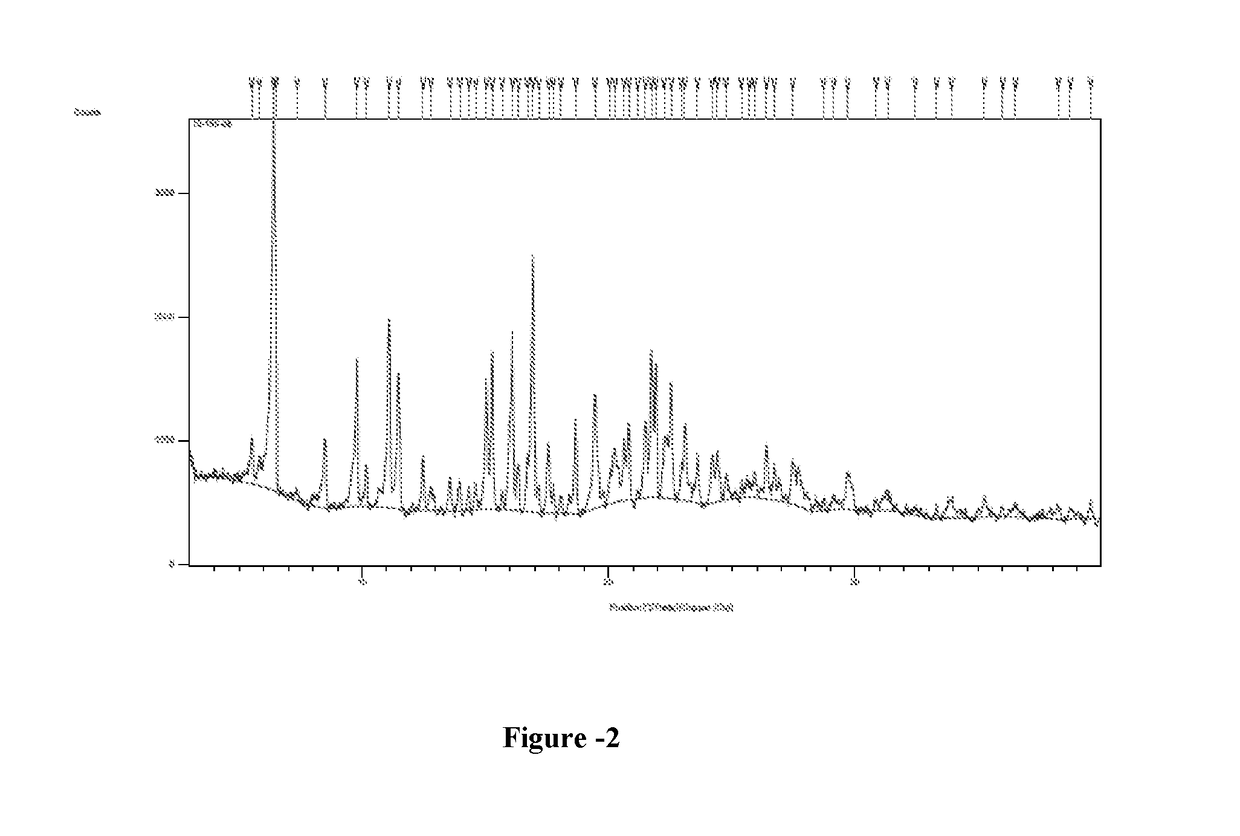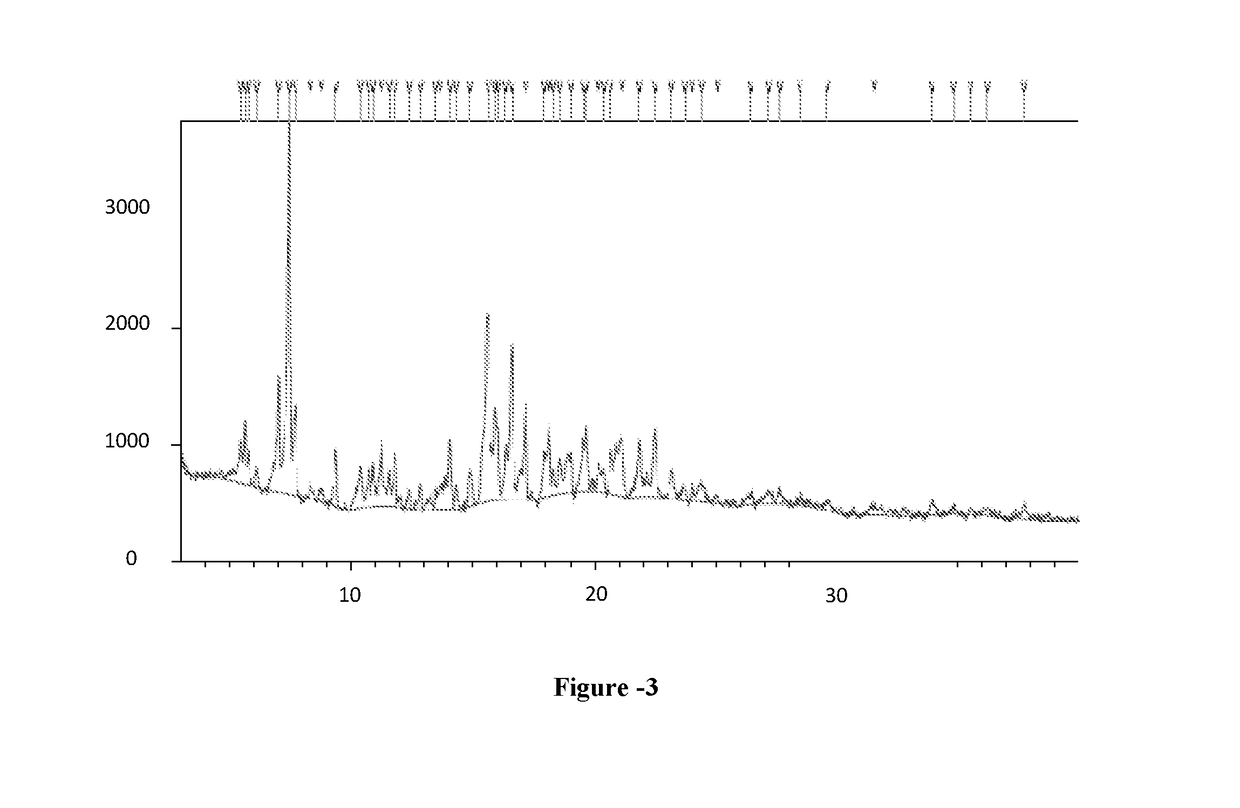Process for the preparation of sugammadex and its intermediates
- Summary
- Abstract
- Description
- Claims
- Application Information
AI Technical Summary
Benefits of technology
Problems solved by technology
Method used
Image
Examples
reference example 1 (example 3
of WO2001 / 040316A1)
Preparation of 6-per-deoxy-6-per-iodo-γ-cyclodextrin
[0094]Triphenylphosphine (15 g) was dissolved in dimethylformamide (80 ml) at ambient temperature and iodine (15.2 g) was slowly added to the solution in 10-15 minutes. To this mixture was added dry γ-cyclodextrin (5 g) and the solution was heated to 70° C. and kept stirring at this temperature for 24 hour. The solution was allowed to cool before the addition of sodium methoxide (1.55 g in 25 ml of methanol). The solution thus obtained was stirred for 30 minutes, poured to 400 ml of methanol and evaporated under vacuum to obtain a dense oily residue. To this residue, 250 ml of water was added to get a dark sticky solid, which was filtered under vacuum. The solid was washed with water (3×50 ml) and methanol (3×50 ml) and dried under vacuum to obtain 2 g of 6-per-deoxy-6-per-iodo-γ-cyclodextrin as a yellow powder. Yield: 40%; HPLC Purity: 20.3%
reference example 2 (example 1
of WO2012 / 025937A1)
Preparation of 6-per-deoxy-6-per-chloro-γ-cyclodextrin
[0095]Phosphorous pentachloride (25.6 g) was slowly added to dimethylformamide (30 ml) at 0-5° C. The suspension was stirred at 25-30° C. for 1 hour before the addition of a solution of γ-Cyclodextrin (5 g) in dimethylformamide (40 ml). The suspension thus obtained was heated at 65-70° C. and stirred at this temperature for 14 hours. Dimethylformamide was removed under vacuum to obtain thick oil. Water (100 ml) was slowly added to the oil followed by sodium hydroxide 20% until pH reached the value of 8.0. The resulted suspension was stirred for 1 hour at 5-10° C. The suspension was filtered and dried under vacuum to obtain 2.5 grams of 6-per-deoxy-6-per-chloro-γ-cyclodextrin as a yellow powder. Yield: 44.8%; HPLC Purity: 22.4%
reference example 3 (example 1
of WO2014 / 125501A1)
Preparation of 6-per-deoxy-6-per-chloro-γ-cyclodextrin
[0096]Phosphorous pentachloride (25.6 g) was slowly added to dimethylformamide (20 ml) at 25-30° C. The suspension was stirred at 25-30° C. for 1 hour before the addition of γ-Cyclodextrin (5 g). The suspension thus obtained was heated at 65-70° C. and stirred at this temperature for 15 hours. The obtained mixture was slowly added to water (100 ml) and cooled at 10° C. followed by addition of sodium hydroxide 30% until pH reached the value of 7.5-8.0. The resulted suspension was stirred for 2 hour at this temperature. The suspension was filtered, washed with water (20 ml) and dried under vacuum to obtain 4.5 grams of 6-per-deoxy-6-per-chloro-γ-cyclodextrin as a yellow powder. Yield: 80.7%; HPLC Purity: 23.0%.
PUM
 Login to View More
Login to View More Abstract
Description
Claims
Application Information
 Login to View More
Login to View More - R&D
- Intellectual Property
- Life Sciences
- Materials
- Tech Scout
- Unparalleled Data Quality
- Higher Quality Content
- 60% Fewer Hallucinations
Browse by: Latest US Patents, China's latest patents, Technical Efficacy Thesaurus, Application Domain, Technology Topic, Popular Technical Reports.
© 2025 PatSnap. All rights reserved.Legal|Privacy policy|Modern Slavery Act Transparency Statement|Sitemap|About US| Contact US: help@patsnap.com



